As 2012 fades into memory, I wanted to share one of its personal highlights with you: my two-week journey Down Under. I could say its impetus was the NonfictioNow Conference, held this year at RMIT in Melbourne and sponsored by my alma mater, the University of Iowa, but the truth is, I’ve been dreaming of Australia since I was eight years old and started swapping stickers with another little girl there. I’d send her Lisa Frank stickers of rainbow unicorns; she’d return fat envelopes spilling with kangaroos in boxing gloves, koala bears with googly eyes, and scratch-n-sniff jars of Vegemite, all of which seemed impossibly otherworldy to me. Australia was the first place I ever hoped to visit.
Counting from the moment I rolled out of my driveway in Canton, New York to the instant I pulled up to my hotel in Melbourne, it took 38 hours to get there. Rather than collapse into bed, I called my dear friend Sree, whom I met last year at the Overseas Writing Workshop in the Philippines, and she darted over bearing gifts, including chocolate TimTams and coconut Lamington Fingers, a bottle of tea tree oil, must-read books, a fresh mango, and most exciting of all: Vegemite, which she declared a rite of passage for any Oz-bound visitor. A dark brown yeast extract, it tasted salty and slightly sour, not as delicious as I’d imagined as a child, but fair enough when spread over liberally buttered toast and downed with hot tea.
Now that I was culinarily baptized, we hit the streets of Melbourne, which has all the city-traits I adore: walking trails along a river lined with footbridges and gelato stands; a bustling Chinatown with dumplings galore; tiny side streets dotted with sushi stands, Malay curry houses, soup stalls, coffeehouses, and bookstores; a massive plaza used for protests and picnics called Federation Square; a sprawling mercado of produce and souvenirs called Victoria Market; and best of all, public art everywhere you turn. We’re talking 12-foot murals, towering sculptures, Gaudi-style architecture, and some highly innovative street musicians (including a Taiwanese rapper wearing a Santa Claus cap who whacked a tambourine against his leg to keep the beat, and four men wearing loin cloths and body paint who played the didgeridoo). What delighted me most, however, was the Sandridge Bridge, which features an engraved glass pylon for every nationality that has ever called Australia home, plus stunning steel statues documenting each major wave of “The Travelers.” Indeed: Australia is a nation that celebrates traveling, that honors the sheer idea of movement. Their aboriginal people are the finest nomads the world has ever known, and every last one of their immigrants traveled an extraordinary distance to be there—as do their visitors today. Maybe this is why I saw images of airplanes wherever I looked: it is the symbol that binds us all.
Then began the conference. NonfictioNow gathered some 350 nonfiction writers from Hong Kong, the Philippines, the United Kingdom, the United States, and Australia under one wildly constructed roof to discuss the state of our letters. Cheryl Strayed of Wild fame opened the conversation with her Dear Sugar column “Write Like A Motherfucker,” which has that glorious line about writerly obsession: the absolute only thing that mattered was getting that extra beating heart out of my chest. Other literati included Australian novelist Helen Garner, Filipino journalist Jose Dalisay, and U.S. essayists David Shields and Margo Jefferson. I participated in four panels myself, on topics ranging from the role of diversity in the essay to ethics, international research, and writing as an immigrant versus as an expat versus as a local. Good times.
From there, I had only one week to spare, so a tough decision ensued: the rainforest, the Great Barrier Reef, or the Outback? My love of Robyn Davidson’s classic travelogue Tracks, which details her epic 1,700 mile trek across the Outback with four camels and a dog named Diggety in the late seventies, pushed me toward the latter, so I caught a flight to Alice Springs, a desert town in the dead, red center of the nation, and booked a three-day camping trip with an outfit called Emu Run Tours. At 5:30 a.m. the following morning, I piled into a caravan with six Taiwanese, three Americans, two Japanese, two Aussies, a Kiwi, a Swede, a Brit, and a German and set off into the sunrise.
A couple hundred kilometers later, our first stop was Uluru, a single slab of sandstone that rises more than 1,000 feet from the earth. Aborigines have been holding ceremonies there for 10,000 years, but only in 1985 did they regain ownership of their sacred site from the government. After visiting the remarkable Cultural Centre, which recreated the ancestral stories of the Anangu people such as Kuniya the woma python woman and Liru the poisonous snake man, we set about hiking Uluru’s perimeter. It was roughly 9.5 kilometers in length and about 102 degrees that day. Our guide told us to carry three liters of water apiece and refill at every opportunity. I quickly separated from the group and hiked in silence and in solitude, marveling at how the face of the rock changed at every angle. And its energy! Though I am not nearly as attuned to “vibration” as my more spiritually-centered friends, even I could feel its pulse. Never have I had such a profound experience with a geological formation before.
After two and a half hours of hiking in the dessicating heat, however, I started experiencing a very different sort of pulse. My own, in my temples. My last liter of water was nearly drained, and the trail’s end was nowhere in sight. Just when dizziness started setting in, however, I spotted this:
Yet another homage to travel! And a most welcome sign of civilization. Once everyone had reconvened in our caravan, we headed off to await sunset over Uluru, which we celebrated with a champagne toast. The next 48 hours entailed two more awe-inspiring hikes (at Kata-Tjuta and at King’s Canyon), two memorable swims (including one at the bottom of said canyon), two cookouts, two nights of sleeping in a swag (that is, a canvas body bag into which you roll out your sleeping bag, over the dirt and under the stars, with nary a tent flap in between), a seven-minute camel ride, and endless camaraderie and story-telling, especially when fueled by bottles of “Fucking Good Port” (that really was as advertised). Bliss bliss bliss.
From the Alice, I blasted off to Sydney to spend my final 36 hours with Sree. Our home base was The Lord Nelson Brewery, a pub with a few rooms up top, right by the Circular Quay. That first night we drank champagne overlooking the Harbor Bridge, then hit up The Argyle for $18 cocktails (eep!), dancing, and flirting. The next day we took a fantastic tour of the Opera House and then caught a bus to the beach-of-legend: Bondi.
Every bit as eye-popping as the landscape was the peoplescape, particularly the Lebanese gangsters dripping in tattoos and girlfriends wearing suede-and-fringed bikinis. That, and all the men in Speedos (known as “budgie smugglers” in Ozzie parlance). From Bondi, we did the spectacular cliff top walk to Coogee, marveling at all the beaches, bays, and rock pools as well as what might be the world’s most scenic cemetery, Waverley (where I have since been instructed to bury the hand of a friend who spent the best year of her life surfing in Sydney, should she die before me). Coconut gelato marked the end of our six kilometer hike, and we returned to the city proper for dinner and another round of dancing, this time at someone’s birthday party. After breakfast the following morning, we dashed back to the Quay for a final glimpse of the city’s landmarks, and then I boarded a silver bird.
What else can I share about the Land Down Under?
Did you see any kangaroos? Yes, but not exactly hopping about. Three were served on a plate, twice as burgers and once as steak. I spotted at least a dozen kangaroos mummified on the highway between Uluru and Kata-Tjuta, and one that seemed to have perished just moments before. I also saw three trapped in a cage at a truck stop near Uluru. And that, I’m afraid, was it—unless you count the kangaroo jerky I nearly bought for my brother-in-law in Sydney, until I decided my niece would never forgive me.
What about koalas with googly eyes? Nope. You have to travel further north or east or south or west than I did for that. Apparently they spend the bulk of their days either stoned on eucalyptus or asleep, and get seriously pissed when interrupted.
Surely you saw at least a snake? Why yes. Allow me to introduce Olive, the python:
And Snickers, the blue-tongued lizard, both of whom I met at the Reptile Centre in Alice Springs:
But I suppose you’re asking about wild ones, no? Well, once, in the far-off distance, en route to Uluru, I glimpsed a lizard that must have measured two and a half feet in length. Big enough to straddle and ride. A monitor, perhaps? But that was it for wildlife, unless you count all the blackflies that attacked me while hiking Uluru.
Any foodie adventures? I was psyched about Australia’s culinary possibilities—particularly “Mod-Oz” which incorporates local produce with European techniques and Asian flavor—but after spending $8.50 on yogurt topped with a few spoonfulls of granola and raisins at the airport in Sydney, I realized I needed to budget, and so invested in a jar of peanut butter and loaf of bread for the bulk of my caloric intake, and allotted only one restaurant visit per day. I tried some Mod-Oz restaurants in Melbourne and in Sydney, but found them rather lacking—especially given their pricetags ($50 to $80 for a main course and single glass of wine). Outback cuisine was far more reasonable: at Victoria Market in Melbourne, I sampled barbecued crocodile (a cross between scallops and chicken) and emu (an ostrich-like bird that Aussies like to turn into sausages) for $9. But the best meals I had in Australia (both in taste and in value) were all Asian, including shockingly good duck curry at Nong’s in Alice Springs and Beijing ya at Mr. Chow’s in Sydney.
What about the Aborigines? Learning about Aboriginal culture was a major goal of mine in Australia, but it’s an incredibly complicated issue—one I won’t even attempt to address in a travelogue like this. I’ll share instead two artworks that speak for themselves. First is the traditional dot painting I bought in the Alice from an artist sitting on a grassy knoll in the Todd ped-mall, surrounded by family. It depicts women hunting for witchetty grubs, honey ants, and bush plums, and men following the tracks of emus and dingoes. This style of dot painting has been practiced for millennia, but first earned international acclaim in the Papunya region in the late seventies. Paintings by prominent artists can rake in six figures, but you can find beautiful works in the three-figure range in Alice Springs, which is lined with galleries.
Second is this work by Gordon Bennett, which I saw at the Contemporary Art Museum in Sydney. It sums up the treatment of the Aborigines over the past 300 years in six devastating words and images:
One of the challenges of being a writer is the heartache you experience every time you find an extraordinarily compelling subject that life will never allow you the time to properly explore. That was how I felt leaving Australia: elated to have glimpsed this remarkable world, yet heartsick that I’ll probably never write more than this about it. So here I am, and here you are. Thank you for being here, and Happy 2013.
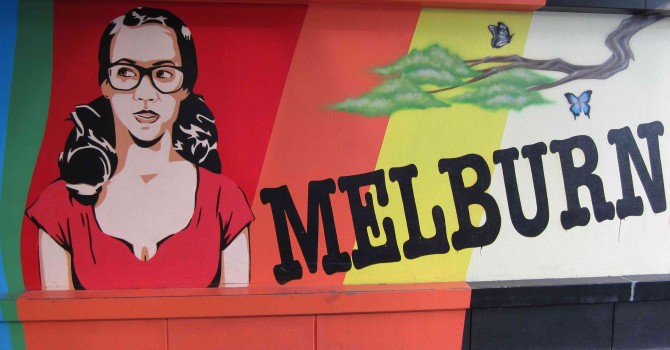
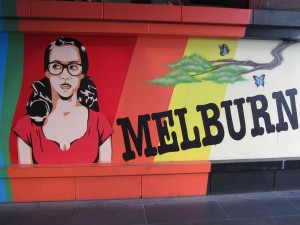
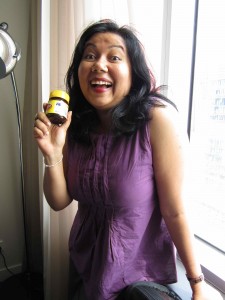
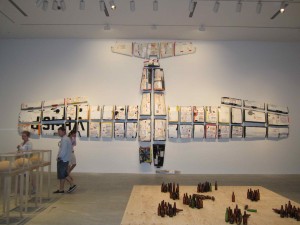

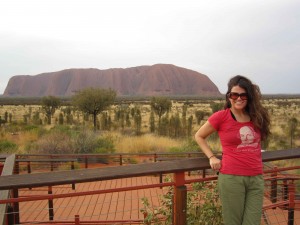
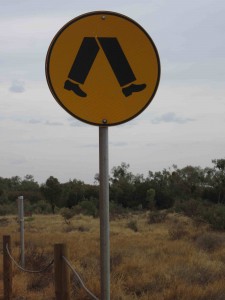

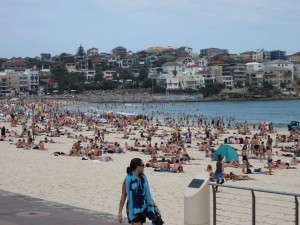
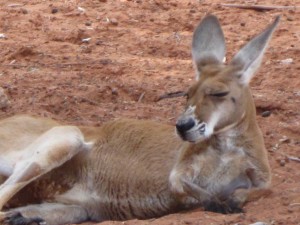
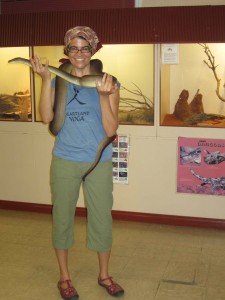



I love that you’re still doing this, Stephanie. I love your adventurous spirit.
Irma
Australia is a stunning country. I remember the first time I went Down Under. It felt completely different, but yet it felt good. There’s so much to learn about the country and so many things to discover and see and that’s why you won’t be able to get to know Australia in one visit. Since my first visit, I’ve been to Australia for several times now to attend the Australian Formula 1 Grand Prix in Melbourne. During the Grand Prix weekend me and my wife are always trying to explore the beauty of the country and that excites us. Due to circumstances, we won’t be able to visit Melbourne for this year’s race, but if all goes well, we’ll be there next year…
As a Byron Bay resident I haven’t been to Melb for over 20 years but just went for 5 days. It’s a fabulous city, I took many photos of those artworks in the streets…loved the goanna sculpture with Cuddlepot at the Library and the water on glass wall at the Art Gallery. Uluru was for myself as well a spiritual thang and I understood that chulkulpa (aboriginal reality) is always now…not of past, not of future but now. Took me 54 years to get that. Loved your article and the way it ended as well. Deb